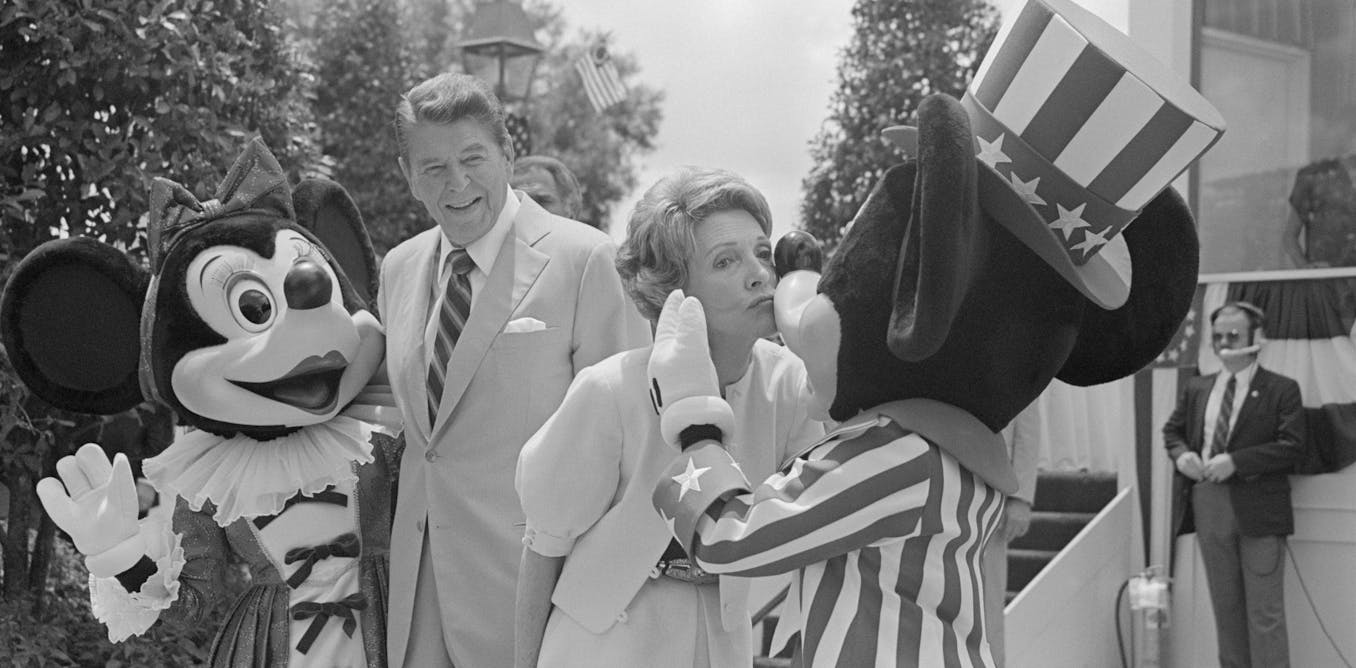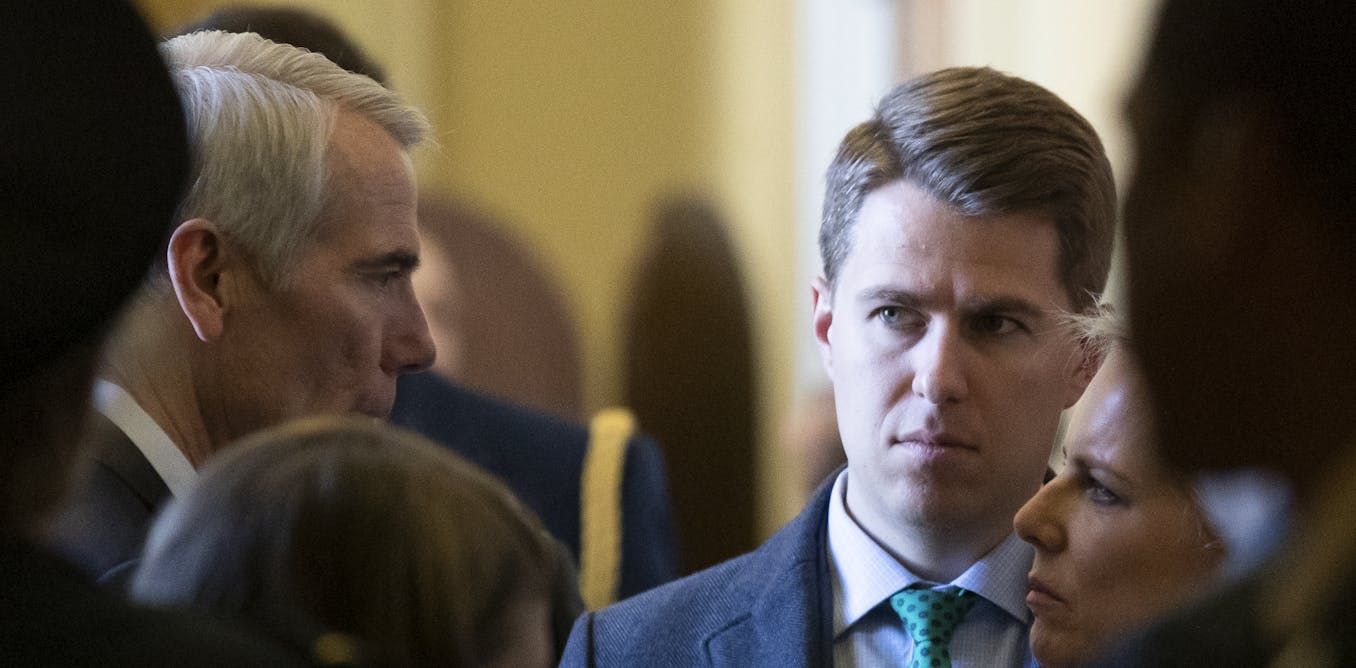For Pennsylvania residents like me, there is no escape from the record-breaking number of political attack ads disrupting our favorite shows and filling our social media feeds.
A projected US$10.7 billion is being spent nationwide – but particularly in battleground states – on political ads this election season.
For those who are feeling election fatigue and just want to stream in peace: Buckle in, because it’s about to get worse.
As of late August 2024, over $1.7 billion in political ads had been reserved nationwide to run between Labor Day and Election Day. Over $400 million of that is just for presidential election ads in seven key battleground states.
With Pennsylvania widely considered the most decisive state in the 2024 presidential election, it may be no surprise that the Keystone State has the most presidential ad reservations, totaling $137 million.
And the Philadelphia market alone is the top market in the country, with $125 million in ad reservations. Democrats are spending about 25% more than Republicans on presidential ads in Philly.
As a political communication expert and professor of media and social influence who lives in Philadelphia, I am often asked: “Why are there so many political ads, why are they so negative, and more importantly, how do we make it stop?”
I’ll answer the first two below. For the last, the truth is we don’t.
Selcuk Acar/Anadolu via Getty Images
Voters feel exhausted, angry, stressed
If campaigns are spending all this money on political attack ads, they must work, right? Surely they sway at least undecided voters?
In a word: no. Research suggests deluges of negative political advertising do little to change voters’ minds.
They can even backfire on candidates.
When voters perceive ads as unfair or manipulative, they are less likely to vote for the candidate or party producing the ads. And when subjected to repeated unwanted exposure to political ads, they can experience “psychological reactance” and behave opposite of what the ads intended.
Some studies also suggest that negative ads create election stress, which can reduce voter turnout among the less politically interested.
In a 2023 Pew Research Center survey, 65% of U.S. adults reported that they always or often feel “exhausted” when they think about U.S. politics. More than half reported that they always or often feel “angry” with U.S. politics.
More concerning, research suggests our elections are harming voters’ mental health. This is marked by lost sleep, increased anxiety and chronic stress.
‘Daisy’ and the birth of ad wars
Historically, political advertising was considered an effective tool for educating voters, building momentum and engaging the politically uninterested.
Although the research is mixed, past studies have shown that advertising increased election turnout and influenced voter behavior.
The infamous 1964 “Daisy” ad run by President Lyndon Johnson’s campaign shocked audiences with the potential horrors of nuclear war. While the ad never mentioned Johnson’s opponent, Arizona Sen. Barry Goldwater, it is largely credited as a turning point in presidential political advertising, ushering in an era of political attack ads.
However, political ad wars have been a feature of U.S. presidential elections since the 1800s, with attack ads on TV starting in the early 1950s.
But why the constant barrage now?
Citizens United unleashes flood of dark money
Political ad spending has monumentally increased over the past several election cycles, and hit the billions after the landmark 2010 Citizens United case.
In that ruling, the Supreme Court decided that limiting spending from corporations or outside groups violated those groups’ First Amendment right to free speech. Prior to Citizens United, corporations and other groups like nonprofits and labor unions were subject to prohibitions on campaign donations. Individual campaign contribution limits, which currently stand at $3,300 per candidate per election, kept spending relatively level across the electorate.
Following the ruling, however, the influx of corporate and outside money completely changed the campaign finance landscape.
In 2010, political ad spending reached $3.3 billion – an 11% increase from the 2008 election that took place pre-Citizens United. A decade later, total spending on political ads soared to $9 billion in the 2020 election.
Significant portions of this spending come from political action committees that are not bound by traditional campaign contribution limits as long as they do not donate the money directly to a candidate or coordinate with a candidate’s campaign.
These groups, known as super PACs, can raise and spend unlimited amounts of money from undisclosed donors. While super PACs have to disclose identities of people who donate over $200 in a year, donors can use shell companies to hide their identities.
This web of secret money, known as dark money, exceeded $1 billion in 2020.
During the 2024 election cycle, over $2.4 billion has been raised by super PACs. This is where much of the funding for the political ad barrage that voters experience in the weeks leading up to the election comes from.
But why are the ads so negative?

Drew Angerer via Getty Images
Attack ads lose appeal
These days, most political ads are negative, according to a 2020 Pew Research Center study.
For example, in the weeks following President Joe Biden leaving the race, 95% of pro-Trump ads focused on attacking Vice President Kamala Harris rather than promoting policy, according to the Wesleyan Media Project, which tracks political advertising.
Americans are a deeply divided electorate. Political violence is on the rise, misinformation floods the system, and trust in media is at an all-time low.
Research shows that fear-based negative messaging leads to stress and anxiety, elicits more bias and entrenches attitudes.
Knowing this, it is reasonable to ask why campaigns continue down the path of negative advertising. The answer likely rests in old beliefs.
Prior studies have shown that people pay closer attention to negative information than to positive information. And infamous ad effects like Johnson’s easy win after the airing of the Daisy ad contribute to the commonly held belief that negative ads still win elections.
But the media environment has changed drastically, and voters are growing resentful.
Voters resent microtargeting
Unlike traditional voter segmentation where an entire group of voters would receive similar messages, campaigns now use data analytics to microtarget messages for specific voters.
Microtargeting enlists the help of social monitoring companies to identify voters’ psychometric data – their hopes, fears, likes, dislikes and so on – so that campaigns can finely tune messages to target them on social media.
Not only are these microtargeted messages manipulative, but they can be an unwelcome disruption and invasion of privacy, especially among the politically uninterested.
A 2020 Pew survey found that over half of voters believe tech companies should not allow political ads on social media. Three-quarters oppose campaigns using their personal data to target them with political ads.
Some evidence suggests that political microtargeting even reduces citizens’ trust in democracy.
After record-breaking amounts of advertising this election cycle, the latest polls remain very tight, and most are within the margin of error. The reality is that Americans are already divided and steadfast in their voting decisions, and it is difficult to change entrenched political attitudes.
Put simply, the political ad barrage coupled with microtargeting strategies is not an effective campaign strategy that sways voters’ minds. Meanwhile, there is growing evidence that this level of negativity is harming the electorate and undermining trust in democracy.




